January of 2021 followed suite from the previous month of December, with south central and southeast Colorado seeing several passing weather systems bringing cooler temperatures and beneficial moisture and snowfall, along with bouts of strong winds and blowing dust to portions of the southeast plains, before warmer and drier conditions returned. For the month of January as a whole, at and above normal temperatures were experienced across across the region, save for pockets of below normal temperatures across portions of south central Colorado. As for precipitation, at or below normal precipitation was experienced across the area, save for pockets of above normal precipitation across portions of south central Colorado and portions of the southeast plains.
The following graphics depict monthly temperature and precipitation departures from normal across the state for the past month of January.
.png) |
.png) |
The preliminary average temperature in Alamosa for the past month of January was 18.8 degrees, which is 2.5 degrees above normal. Alamosa recorded 0.23 inches of precipitation and 3.8 inches of snow through the month of January, which is 0.03 inches below normal and 0.2 inches below normal, respectively.
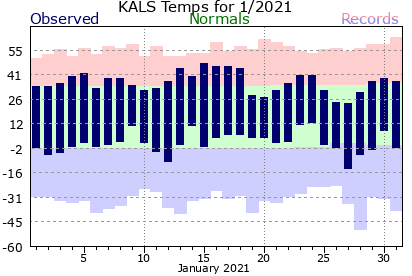 |
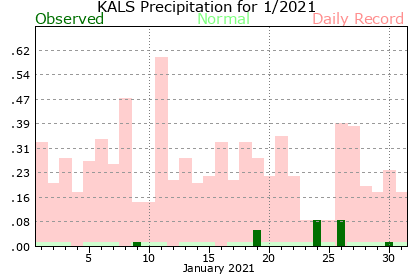 |
The preliminary average temperature in Colorado Springs for the past month of January was 31.5 degrees, which is 1.0 degrees above normal. Colorado Springs recorded 0.57 inches of precipitation through the month of January. This is 0.25 inches above normal and makes January of 2021 the 12th wettest January on record in Colorado Springs. This remains well below the wettest January, 1987, when 1.17 inches of precipitation was recorded in Colorado. Colorado Springs recorded 7.9 inches of snow through the month of January. This is 2.3 inches above normal and makes January of 2021 the 19th snowiest on record. This remains well behind the snowiest January, 1987, when 28.7 inches of snow was recorded in Colorado Springs.
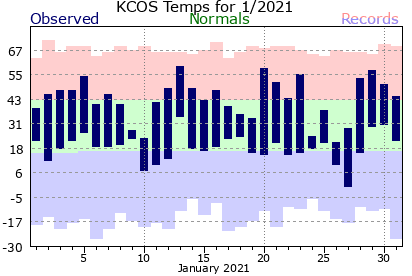 |
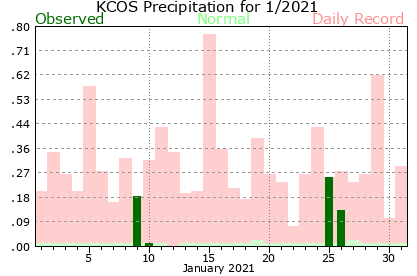 |
The preliminary average temperature in Pueblo for the past month of January was 32.2 degrees, which is 1.7 degrees above normal. Pueblo recorded 0.57 inches of precipitation through the month of January. This is 0.22 inches above normal and makes January of 2021 the 21st wettest January on record in Pueblo. This remains well behind the wettest January, 1948, when 1.45 inches of precipitation was recorded. Pueblo recorded 7.5 inches of snow through the month of January, which is 1.0 inches above normal.
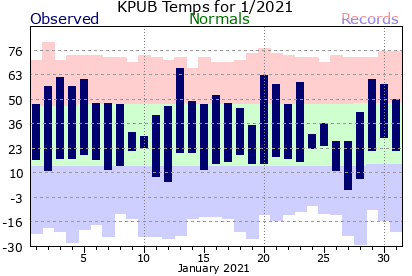 |
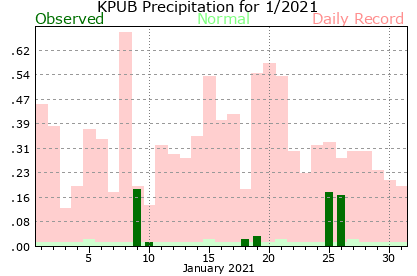 |
Looking ahead into February in Alamosa, the average high temperature and low temperature of 36 degrees and 1 degree on February 1st, warm to 45 degrees and 12 degrees by the end of the month. The average temperature for the month of February in Alamosa is 22.8 degrees. Alamosa averages 0.26 inches of precipitation and 3.8 inches of snow through the month of February. On average, February is tied with January as the driest month of the year in Alamosa.
In Colorado Springs, the average high temperature and low temperature of 43 degrees and 18 degrees on February 1st, warm to 48 degrees and 22 degrees by the end of the month. The average temperature for the month of February in Colorado Springs is 32.1 degrees. Colorado Springs averages 0.34 inches of precipitation and 4.9 inches of snow through the month of February.
In Pueblo, the average high temperature and low temperature of 48 degrees and 15 degrees on February 1st, warm to 55 degrees 21 degrees by the end of the month. The average temperature for the month of February in Pueblo is 33.9 degrees. Pueblo averages 0.30 inches of precipitation and 3.8 inches of snow through the month of February. On average, February is the driest month of the year in Pueblo.
Below is the Climate Prediction Center's (CPC) temperature and precipitation outlook for the month of February, which gives equal chances of above normal, below normal and near normal temperatures and precipitation across south central and southeast Colorado, save for a nod towards below normal temperatures across the far southeast plains, as well as a slight nod towards above normal precipitation across northern portions of south central Colorado.
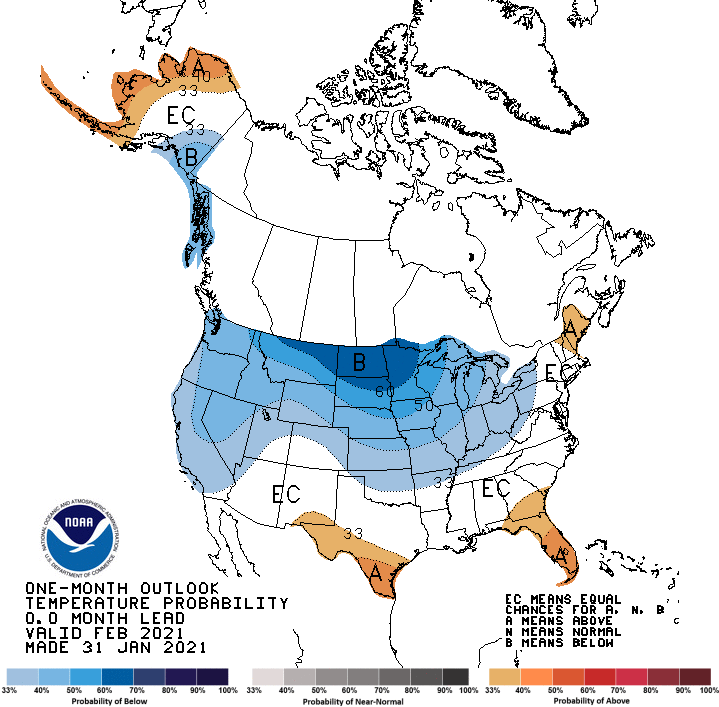 |
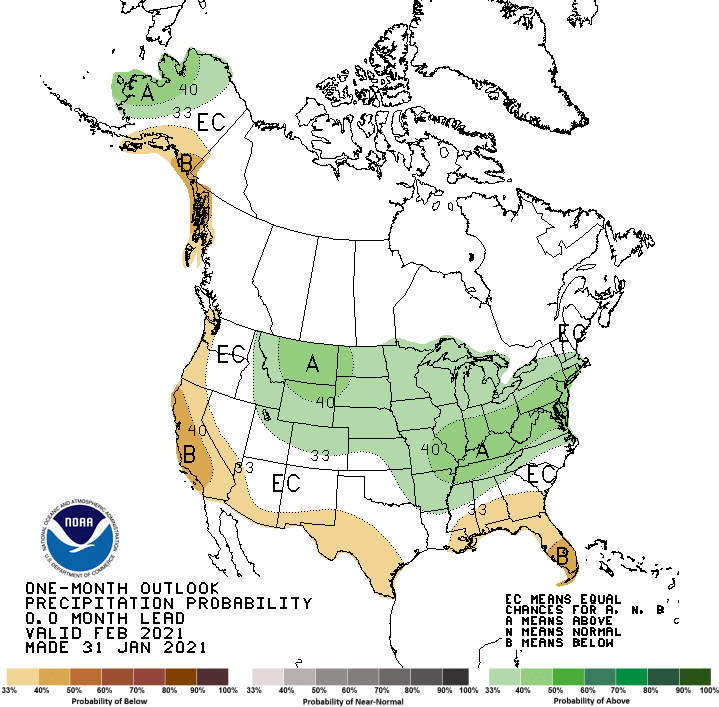 |